Outbreak.info genomic reports: scalable and dynamic surveillance of SARS-CoV-2 variants and mutations
- PMID: 36823332
- PMCID: PMC10399614
- DOI: 10.1038/s41592-023-01769-3
Outbreak.info genomic reports: scalable and dynamic surveillance of SARS-CoV-2 variants and mutations
Abstract
In response to the emergence of SARS-CoV-2 variants of concern, the global scientific community, through unprecedented effort, has sequenced and shared over 11 million genomes through GISAID, as of May 2022. This extraordinarily high sampling rate provides a unique opportunity to track the evolution of the virus in near real-time. Here, we present outbreak.info , a platform that currently tracks over 40 million combinations of Pango lineages and individual mutations, across over 7,000 locations, to provide insights for researchers, public health officials and the general public. We describe the interpretable visualizations available in our web application, the pipelines that enable the scalable ingestion of heterogeneous sources of SARS-CoV-2 variant data and the server infrastructure that enables widespread data dissemination via a high-performance API that can be accessed using an R package. We show how outbreak.info can be used for genomic surveillance and as a hypothesis-generation tool to understand the ongoing pandemic at varying geographic and temporal scales.
© 2023. The Author(s), under exclusive licence to Springer Nature America, Inc.
Conflict of interest statement
Competing interests
M.A.S. receives grants from the US National Institutes of Health within the scope of this work and grants and contracts from the US Food and Drug Administration, the US Department of Veterans Affairs and Janssen Research & Development outside the scope of this work. M.A.S. and K.G.A. have received consulting fees and/or compensated expert testimony on SARS-CoV-2 and the COVID-19 pandemic. The other authors declare no competing interests.
Figures


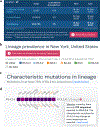
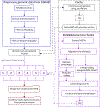

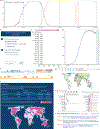
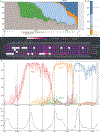
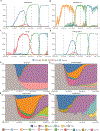
Update of
-
Outbreak.info genomic reports: scalable and dynamic surveillance of SARS-CoV-2 variants and mutations.Res Sq [Preprint]. 2022 Jun 28:rs.3.rs-1723829. doi: 10.21203/rs.3.rs-1723829/v1. Res Sq. 2022. Update in: Nat Methods. 2023 Apr;20(4):512-522. doi: 10.1038/s41592-023-01769-3. PMID: 35794893 Free PMC article. Updated. Preprint.
Comment in
-
Tracking SARS-CoV-2 variants and resources.Nat Methods. 2023 Apr;20(4):489-490. doi: 10.1038/s41592-023-01833-y. Nat Methods. 2023. PMID: 36922622 No abstract available.
References
-
- Skowronski DM & De Serres G Safety and efficacy of the BNT162b2 mRNA Covid-19 vaccine. N. Engl. J. Med. 384, 1576–1577 (2021). - PubMed
-
- Holmes E Novel 2019 coronavirus genome. Virological https://virological.org/t/novel-2019-coronavirus-genome/319 (2020).
Publication types
MeSH terms
Supplementary concepts
Grants and funding
LinkOut - more resources
Full Text Sources
Medical
Miscellaneous

